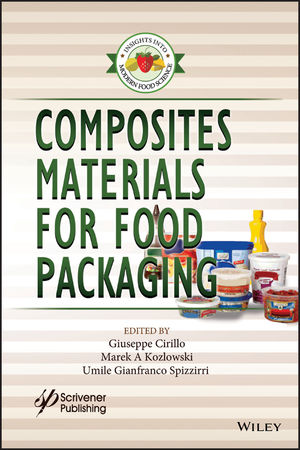CANNABIS PRODUCTS | MARCH 2020
Streamlining cannabis food and beverage packaging
Simplified solutions: The cannabis industry needs to streamline its approach toward packaging in order to reduce its carbon footprint.




At this early stage in the cannabis-infused food and beverage industry, product development solutions sometimes take the form of a patchwork quilt. The finished result very well might be functional—and perhaps even delicious—but not every aspect is picture-perfect.
Such is often the case with packaging. In order to meet diverse product needs related to protection, shelf life, overall quality, branding, safety, and local regulatory requirements, customers often leave cannabis dispensaries with products featuring multiple levels of redundant packaging. The industry is in need of a more-streamlined approach.
For the latest insights on developing cannabis-infused food and beverages, visit cannabisproductsmagazine.com
“Packaging has become a major concern now for cannabis producers, primarily regarding sustainability, regulations and branding,” says Sean M. Riley, senior director, media and industry communications, PMMI, Herndon, VA. “The majority of cannabis companies are looking for a bundled solution to achieve a fully integrated line. Much like traditional consumer packaged goods (CPG) operations, companies manufacturing cannabis products are searching for recyclable materials that address the consumer’s desire for sustainable packaging.”
A Success Story
Wana Brands, based in Boulder, CO and one of the industry’s leading edibles producers with business across multiple states, recognized this largely wasteful approach toward packaging in early 2019.
As the company noted in a February 2019 press release highlighting its work in this area: “Due to labeling regulations and product quality standards, many cannabis products are sold in multiple layers of plastic and packaging, leading directly to the industry’s carbon footprint problem. Now trailblazer Wana Brands is advancing industry innovation by unveiling a more sustainable packaging solution for its artisan edibles. The new containers reduce three layers of packaging to only one, with a tamper-evident shrink band adding another level of security.”
At the time, Nancy Whiteman, CEO, Wana Brands, noted that the new container provides “compliant, sustainable product storage that is reusable, recyclable and biodegradable,” while mitigating any potential impact from moisture, oxygen, static charge and UV light. The packaging is airtight, antistatic and opaque to UV light. It’s child-resistant and odor-proof. The food-grade packaging is also FDA-approved. It meets all requirements for safety, regulatory compliance and branding. At the time, Wana Brands noted that the new packaging would be available in Colorado, Oregon and Michigan.
Exploring Options
The legal recreational and medical cannabis food and beverage industry poses its fair share of challenges to packaging providers.
“With cannabis being such a new industry, there is a lot of room for design innovation and development from original equipment manufacturers (OEMs),” says Riley. “While machines and processes can be adapted from other, similar industries to a certain extent, at the end of the day, cannabis is a unique industry with its own set of operational requirements and goals.”
The “exit package” requirements in some states for purchased cannabis products leaving the store make it very difficult to reduce the packaging footprint, notes Tom Newmaster, partner, FORCEpkg, Lancaster, PA. “Requirements like opaque package, child-resistant package, closable if not intended for single use, light-resistant package, tamper-evident package, THC symbols, and sometimes a space for a licensed dispensary to attach a personalized label make product communication—features and benefits—a challenge. There are numerous other requirements that vary between medical and recreational products—and then in almost every case, these vary state by state.”
In some cases, cannabis-infused food and beverage companies might decide to rely on secondary packaging to leave the dispensary so they can focus on branding. “Think about traditional food items you buy in a c-store or grocery store,” says Newmaster. “You have less than six seconds to communicate everything, including brand, taste/flavor, features, benefits, and overall product differentiation. Edibles need to do many of the same things, but with the added regulatory requirements of cannabis.”
One arena for sustainable packaging solutions will likely come from the cannabis plant itself. “Sustainable packagers with a cannabis focus are now popping up,” says Riley. “Sana Packaging in Denver, for example, only creates packages made from 100 percent hemp plastic and 100 percent reclaimed ocean plastic.”
Hemp will likely make a major impact on packaging sustainability over the next few years, says Newmaster. “It’s widely considered more renewable, and many believe it makes a better and even stronger paper substrate. Now that we can once again use hemp vs. wood pulp to make packaging materials, look for advances, combinations, and new materials based on this old/new component. It will be interesting to see if cannabis learns more from traditional consumer products, or if cannabis will lead traditional products to a more-sustainable path.”
There are new packaging materials surfacing—but different products pose different challenges to the packaging material. “Innovative and emerging packaging that can reliably withstand both heat and cold, or sit on store shelves, has a ways to go before widespread usage is available,” says Riley. “Nanotechnology, biotechnology and microparticles in the packaging layer with antibacterial qualities can extend the shelf life of perishable products like cannabis by drastically reducing the proliferation of bacteria and fungus.”
Looking for a reprint of this article?
From high-res PDFs to custom plaques, order your copy today!










